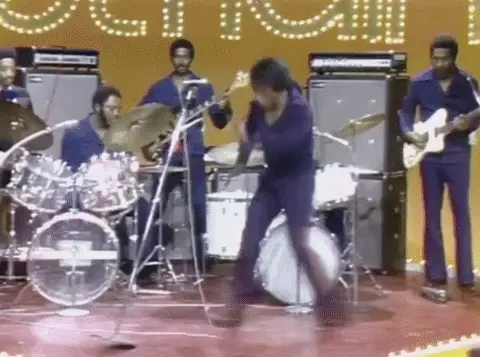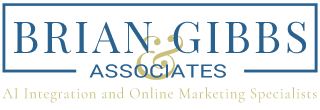How to Build an Effective Landing Page
Landing pages can help increase your digital marketing success by adding them to your website.
However, not every landing page works equally well, and knowing what kind of landing page works best for you can help you connect better with your audience. Potentially increasing sales and brand awareness and customer satisfaction. Here are some tips for landing pages, including why they’re useful and what makes them effective.
What is an effective landing page?
An effective landing page is a single web page on your site that serves one particular function. They can be the designated page you’re taken to when you click on an ad. It can also be the page that follows a call-to-action button or serve as the homepage of a website.
The most common for a landing page is to convert leads into sales or to collect emails. But you can also use a landing page to promote a contest, run sweepstakes, or announce a special offer.
Landing pages are usually designed to help you accomplish a goal, like increasing traffic to your blog, collecting contact information, or driving bookings to an upcoming event.
You can also build landing pages to generate interest around a specific topic or theme. For example, you might create a landing page about a new software release or an upcoming conference.
Simply put, a landing page is a single webpage that helps you achieve a particular objective.
Why do you need a landing page?
Why would you create an extra page for people to complete a form? Why not just use the homepage or about page for your site? Excellent questions!
If you read this article, you’ll probably be able to answer these questions yourself. Still, the short answers are this: A landing page removes distractions by eliminating navigation, competing links, alternate options, and alternative paths to capture your visitor’s undivided attention. Complete attention means you can direct your visitors to where you want them to go—to your lead form. Landing pages are specifically built to generate some type of conversion.
Now that you understand the importance of landing pages, let’s look at some best practices for setting them up so they’re optimized to convert visitors into leads.

1. Simplicity
Creating an effective landing page doesn’t need to be rocket science. It’s just a matter of adding some key ingredients and then ensuring they’re executed properly. HBICC isn’t the catchiest of acronyms, but it is an easy formula for ensuring performance. Each one is a step towards creating a successful conversion campaign. What does HBICC mean?
- Headline: Your headline must match your ad and be brief. Your ad copy and headline shouldn’t be too different from each other. If there is a disparity between the two, visitors to your site may be confused.
- Brief description: The emphasis here is on brief. If you can’t explain your product or service well enough for someone to understand why they would want it, perhaps you need to reevaluate your offer. For more premium products, these lessons still apply. Make sure each point stands out using short, sharp, and valuable messages.
- Images: High-quality images that complement your landing page copy. You should cater to the 40 percent of people who respond best to visual stimuli. Choose a design that is visually appealing to the eye.
- Credentials: If you’re a new brand to consumers, they may be interested in knowing who you are. Show off any certifications or awards you’ve earned. Linking to your social media accounts is a good idea if you have them. Even better, make your landing page shareable.
- Call to action (CTA): This is the finish line of your landing pages. Make it easy for people to see and notice. At the very least, we recommend making it visible with bright colors. The same goes for languages, ‘submit’ isn’t imaginative or inspiring. Use creative copy for your call to action (CTA) text.
2. Tailor your page to your offer
Research suggests more landing pages mean better conversion opportunities. Be sure your landing page has a clear narrative for your visitor to follow. They won’t be able to see the connection between your ad and your offer if they use standardized landing pages for every campaign.
Better yet, remove any links to other parts of your site from your landing pages! Focus on making your landing page convert. Your landing page is like your store’s in-store checkout desk—it’s where people come to buy. Don’t hide the end goal behind fancy graphics or put it somewhere else where people won’t see it.
3. Use a strong headline

Write a compelling headline for your content. It will be the most viewed element of your landing page.
You have less than fifteen seconds to capture a visitor’s attention and get them to read or view the rest of the content on the page. Your headline should tell the reader what they will get from reading your content. Keep it short and sweet—no more than 20 words, but no fewer than 10 is preferable.
4. Use an effective subheading
The headline’s purpose isn’t to inform visitors but to attract them. Next, add a subheading so they’ll stick around. To get the best results, place the subheading directly under the headline. You should use your subheading to complement the header and provide additional details about your offer. Use words that persuade people to buy.
If readers have doubts or objections about doing something, use the subheading for that purpose.
5. Have informative body copy
Informative body copy expands on both the strong headline and effective subtitle. It also complements the visual elements of your landing page. It doesn’t mean listing the key features of your product or including every feature under the sun.
Customers usually don’t know exactly what they want — they just know it exists somewhere. They’ll find it if you give them enough information about your product or service to decide.
Answer these questions in your copy to help ensure that you provide enough information to convince readers to take action:
- What are the problems I’m trying to solve?
- How does my product or service address those problems?
- Why do I think people will benefit from buying from me?
- What are some specific things I offer?
6. Create Copy That Can Be Scanned
Most online readers scan website content — meaning they scan it, skim over some parts, and move on to the next thing. To encourage this behavior, you want to keep things simple and easy to digest. This means breaking up large blocks of text into smaller segments using bullets and subheadings. People scan web pages and tend to focus on headlines and subheads. Make sure those sections stand out clearly by making the headline more prominent than the rest of the text.
People scan web pages and tend to focus on headlines and subheads
You can also use bolded fonts to draw attention to keywords. And don’t forget about white space; it makes copy easier to read. A good rule of thumb is to aim for 3–4 lines per paragraph. If you go beyond four lines, your reader might start skipping over paragraphs.
And remember, most people scan websites horizontally, so ensure your copy isn’t too long vertically. You don’t want to force your visitor to scroll down.
10 Best Free and Paid AI Copywriting Tools for Entrepreneurs
7. Encourage a conversion with an enticing offer

Eliminating exit points helps website visitors stay focused, but luring them with something extra practically assures a high conversion rate.
Offer a discount, a useful item like an ebook, or a free trial in exchange for a website visitor’s email address. There are countless offers for gated content, but make sure the offer is relevant to your goods or services.
After persuading site visitors that your offer is worthwhile, don’t instantly discourage them from converting by using an excessively drawn-out lead-capture form.
The most common fields on a landing page form are first name, last name, and email address. More information might be required depending on the objective of your landing page. But, this only means you’ll need to make your offer compelling enough to warrant the exchange.
8. Ensure a conversion with a killer call-to-action
We’ve finally arrived at the crucial section of your landing page! The button that website visitors must click after completing a lead-capture form is known as a call-to-action or CTA.
When writing the button’s copy, use phrases that encourage and inspire your visitors to do a certain action. Usually, this entails creating a sense of urgency. Even WordStream concurs, as seen by its strong call-to-action standards. They advise using powerful command verbs, figures, and words that arouse emotion and give spectators a cause to participate in the activity.
Use phrases that encourage and inspire your visitors to do a certain action.
Regarding CTA design, the font must be legible and consistent with the other fonts on the website. However, it ought to be a little bigger than the description text.
Numerous studies have shown that buttons with rounded corners are more clickable than squared corners. However, the size of your button generally matters more than its shape. Although it shouldn’t be so big as to overwhelm your landing page or visitors. Your CTA should be noticeable on your website at first glance, and the language should be simple to read.
Regarding color, color theory in the marketing profession plays an important role. Your CTA should strike a balance between being memorable and reflecting your brand. For instance, contrasting colors were more conversion-producing, especially orange and green. SAP discovered many years ago that orange CTAs increased conversion rates by 32.5 percent.
9. A/B testing increases conversion chances

Now that your landing page has all of the necessary components, it’s time to A/B test the copy, graphics, design, and CTA. Analyze the performance metrics for each page to determine what needs to be changed to achieve your ideal conversion rate. It’s important to test just one component of the landing page at a time to evaluate which was effective.
Even though they are unrelated to A/B testing, it’s crucial to mention other optimizations you should consider. For instance, making your copy search engine-friendly and reducing your landing page load time, particularly on mobile. Conversion rates might be significantly impacted by even a small load time delay. Use Google’s convenient PageSpeed Insights tool to evaluate your landing page.
Time to Wrap it Up
Once you’ve completed our checklist, it’s time to sit back and use website visitor tracking software to analyze the data.
The marketing ROI from these carefully built landing pages makes all of these considerations worthwhile, although they may seem like a lot to do when creating a well-designed landing page.
Good luck, and go get those conversions!
Related articles you might want to read:
8 Ways to Get More Traffic to Your Website
Which Digital Marketing Channels Have the Highest ROI?

